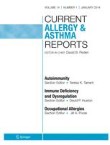The lack of attention on adherence to oral nutritional interventions in head and neck cancer patients limits our understanding of the extent of the research in this field. Thus, the present review aimed to systematically identify and map the research on adherence to oral nutritional interventions in head and neck cancer, as well as to identify existing gaps in knowledge. A scoping review methodology was employed. Despite identifying studies that have measured adherence to oral nutritional interventions, very few studies monitored its influence on clinical and nutritional outcomes in head and neck cancer patients or reported factors related to adherence.
Abstract
Background
Dietary counselling provided by a dietitian, with or without oral nutritional supplements, can impact on nutritional and clinical outcomes in head and neck cancer (HNC) patients undergoing radiotherapy. However, little is known about the role of adherence to oral nutritional interventions in this population. This review aimed to map the literature for evidence of adherence to oral nutritional interventions in HNC patients undergoing radiotherapy and to identify gaps in knowledge in this field.
Methods
A scoping review methodology was used to identify studies, extract data, and collate and summarise results. We searched Medline, Embase, Cochrane Central and CINAHL, from the earliest available time up to 8 January 2020.
Results
In total, 2315 unique articles were identified, 163 studies were assessed in full and niner were included in the scoping review. The use of different measures to assess adherence and variability in the timing of the assessments was noted across studies. Despite identifying studies that have measured adherence to oral nutritional interventions, very few studies monitored its influence on clinical and nutritional outcomes in HNC patients or reported factors related to adherence.
Conclusions
A robust evidence base is lacking for adherence to oral nutritional intervention in HNC patients. Overall, further studies evaluating the impact of oral nutritional interventions in HNC patients undergoing radiotherapy should measure adherence to the intervention. Early recognition of non‐adherence and the contributing factors could ensure intensification of nutritional support and better health outcomes.






